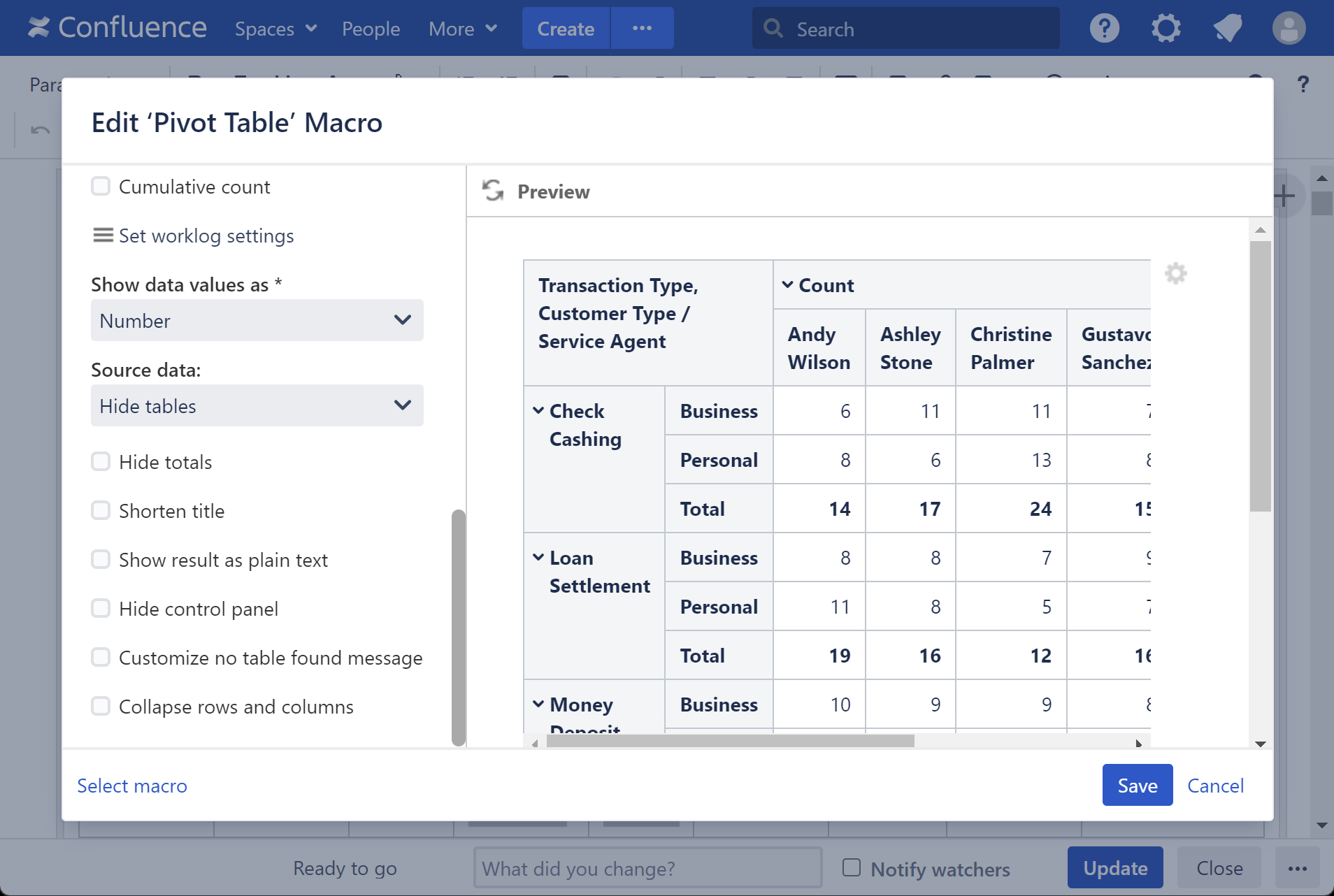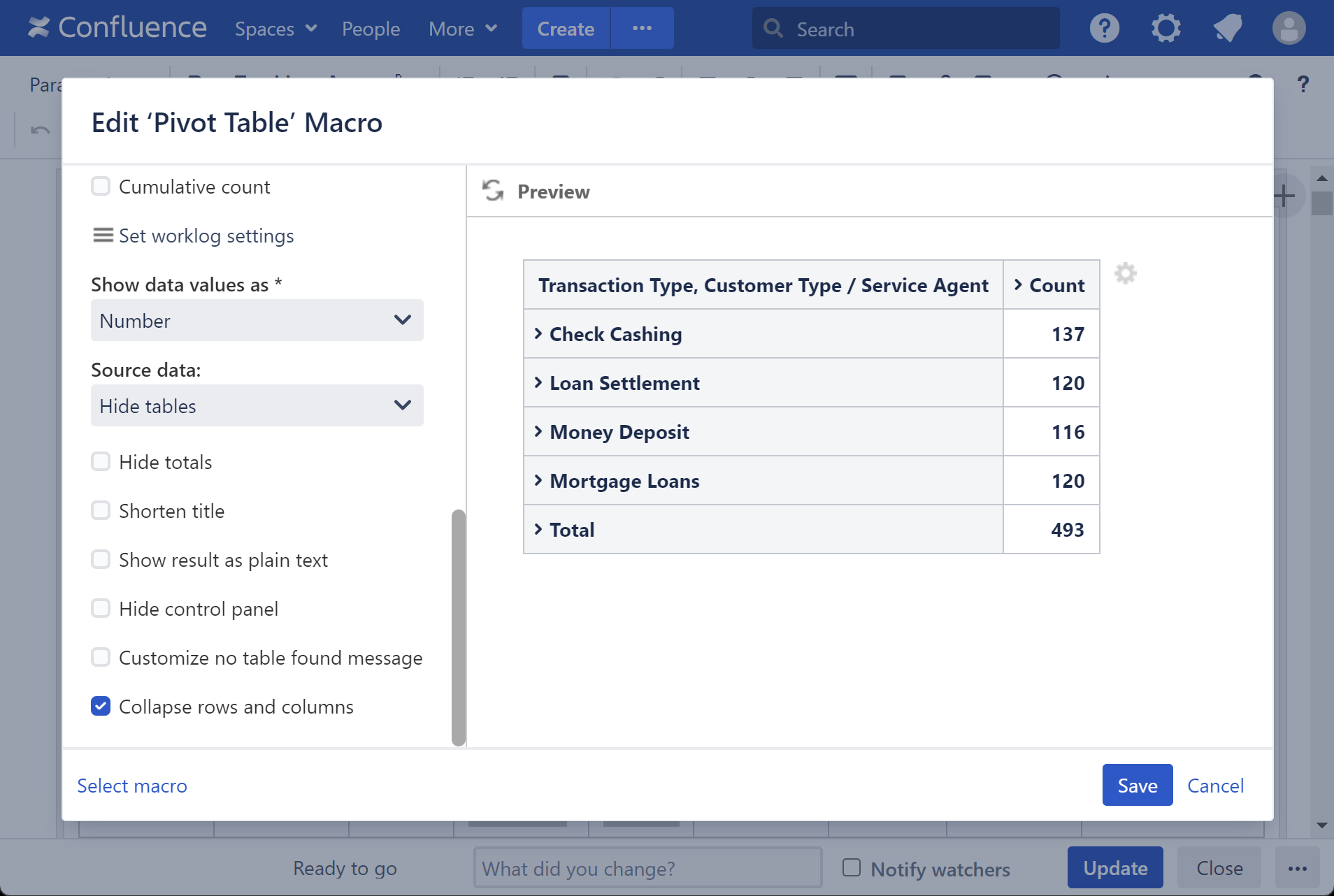Download PDF
Download page Managing pivot table options.
Managing pivot table options
Set the default sorting
- Switch the page to the edit mode.
- Select the macro and click Edit.
- Switch to the Options tab.
- Locate the Default Sorting box.
- Click it and select the column with the appropriate sorting order.
- Save the macro and the page.
Default sorting is available only in the pivot tables with one column selected as row labels.
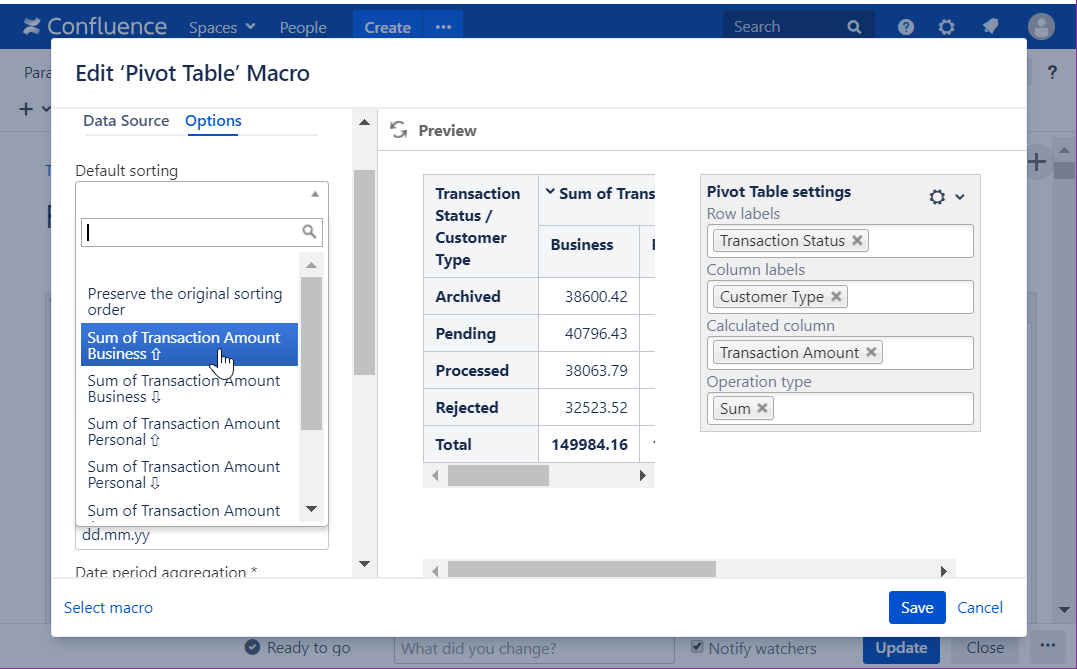
Set the cell value delimiter
- Switch the page to the edit mode.
- Select the macro and click Edit.
- Switch to the Options tab.
Locate the Cell value delimiter box.
Enter the character (multiple characters) used to separate values in cells.
Save the macro and the page.
If the cell value delimiter is not a regular character but a space, use the Unicode character \u0020.
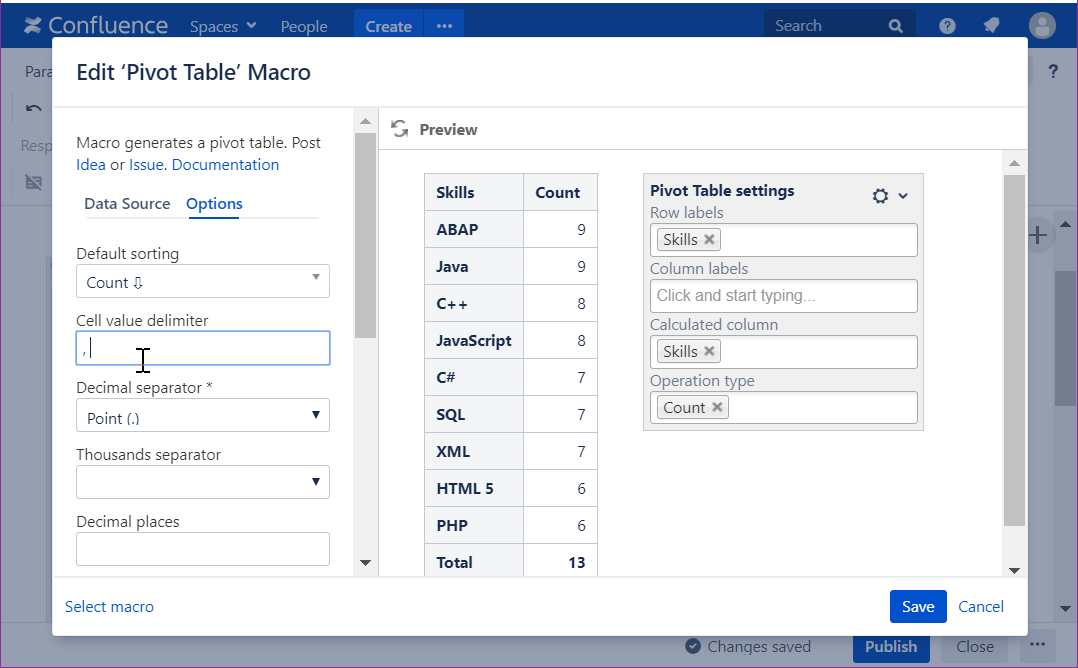

Set the literal value delimiter
- Switch the page to the edit mode.
- Select the macro and click Edit.
- Switch to the Options tab.
Locate the Literal value delimiter box.
Select the required literal value delimiter.
Save the macro and the page.
If the required literal value delimiter is not a regular character but a space, use the Unicode character \u0020.
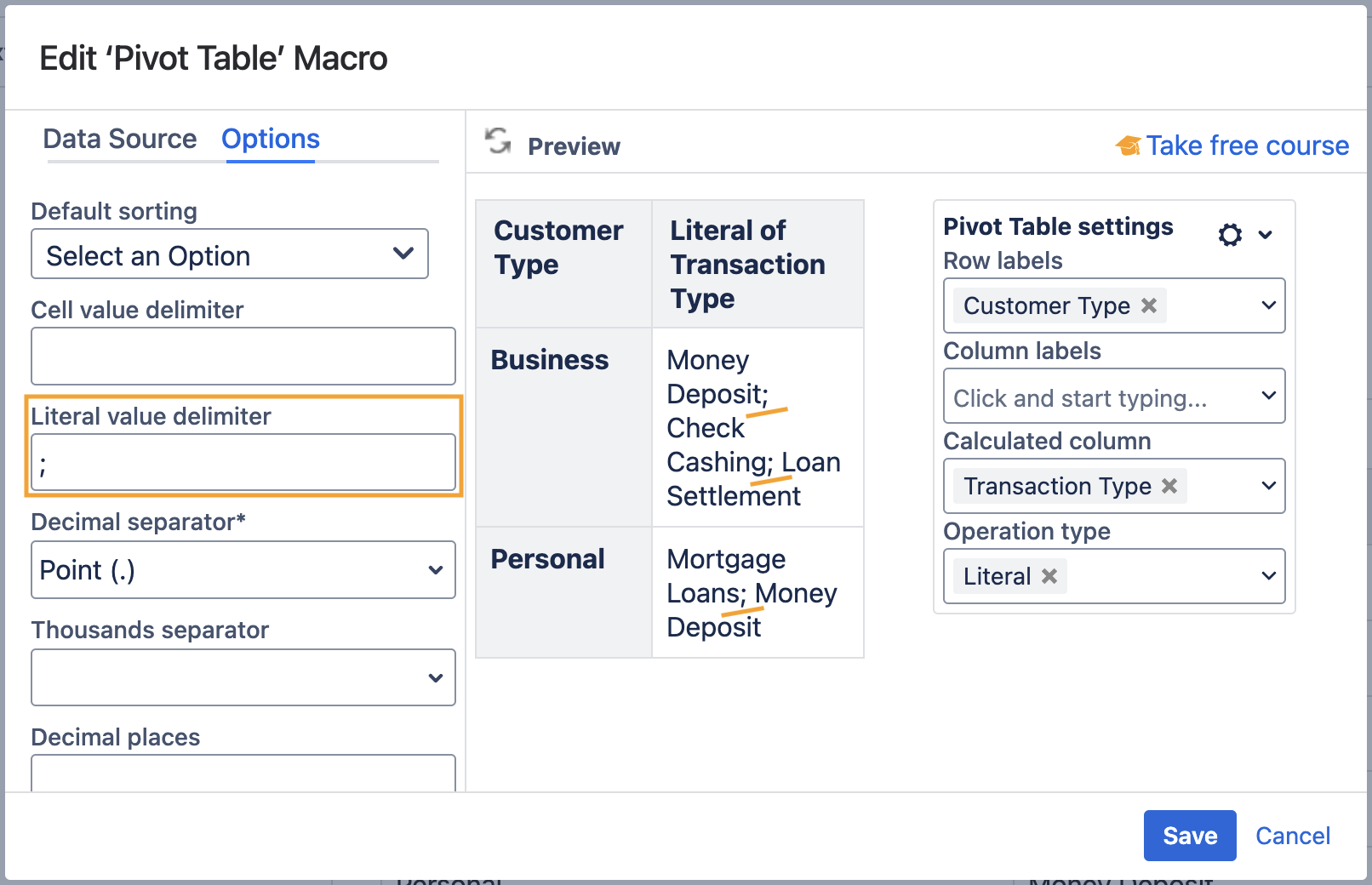
Set the decimal separator
- Switch the page to the edit mode.
- Select the macro and click Edit.
- Switch to the Options tab.
- Locate the Decimal separator box.
- Select the correct decimal separator from the list, as follows:
- Point
- Comma
- Save the macro and the page.
The incorrectly specified decimal separator may cause the incorrect calculation of numerical values.
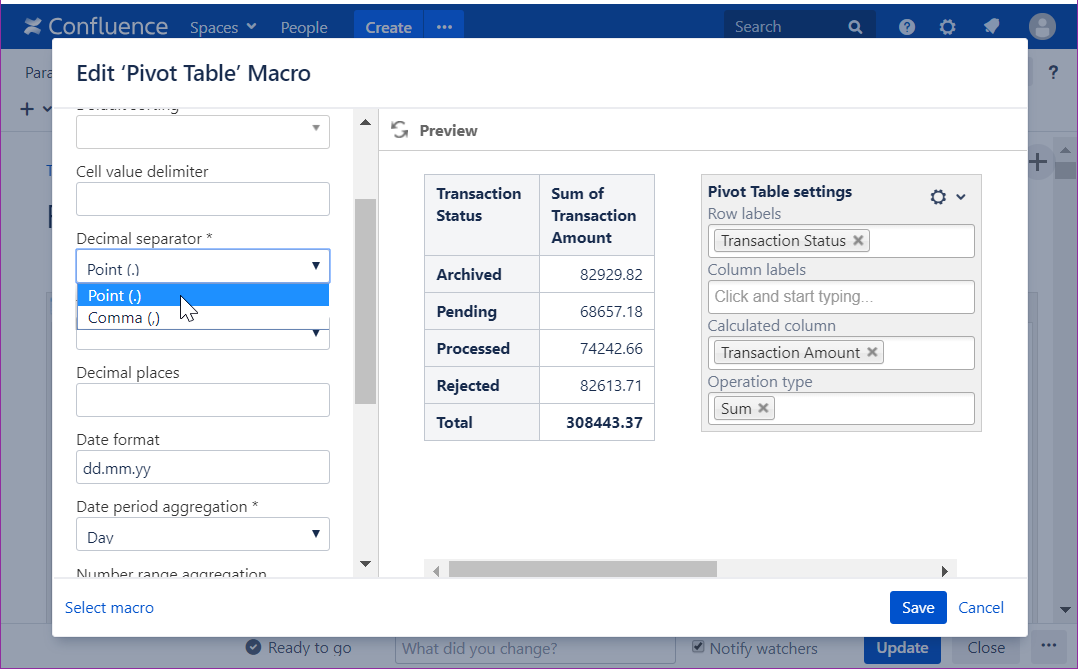
Set the thousands separator
- Switch the page to the edit mode.
- Select the macro and click Edit.
- Switch to the Options tab.
- Locate the Thousands separator box.
- Select the correct decimal separator from the list, as follows:
- Space
- Point
- Comma
- Save the macro and the page.
Selection of the thousands separator is optional as it only improves Options of numerical values without affecting the original values in the source table.
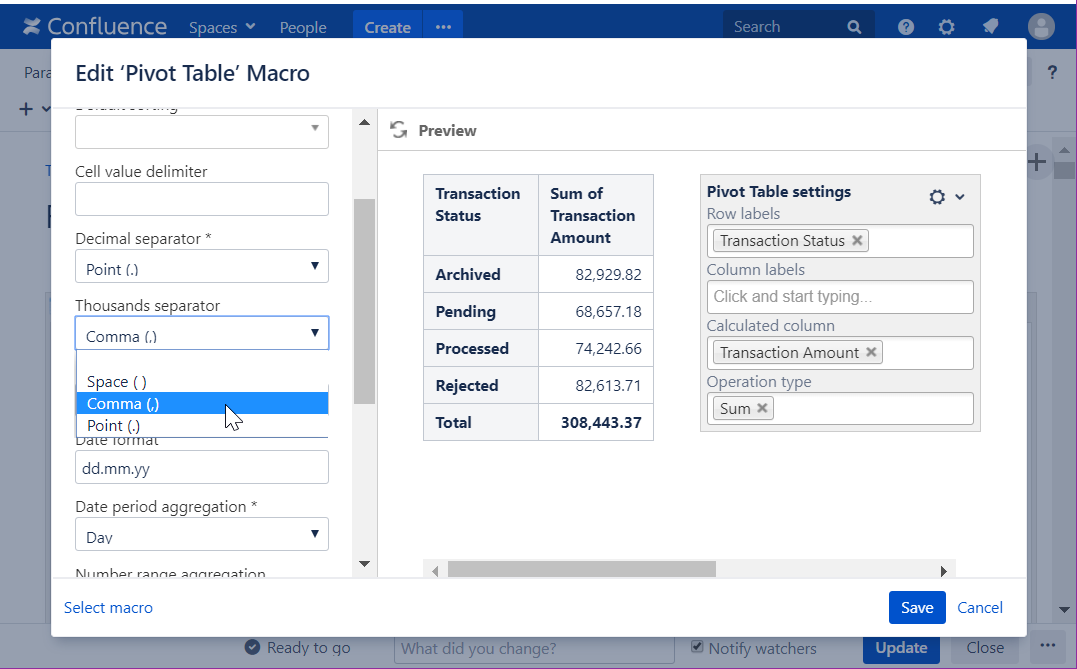
Set the number of decimal places
- Switch the page to the edit mode.
- Select the macro and click Edit.
- Switch to the Options tab.
- Locate the Decimal places box.
- Enter the number of decimal places to display.
Save the macro and the page.
You may need to limit the decimal places when using the Average operation type.
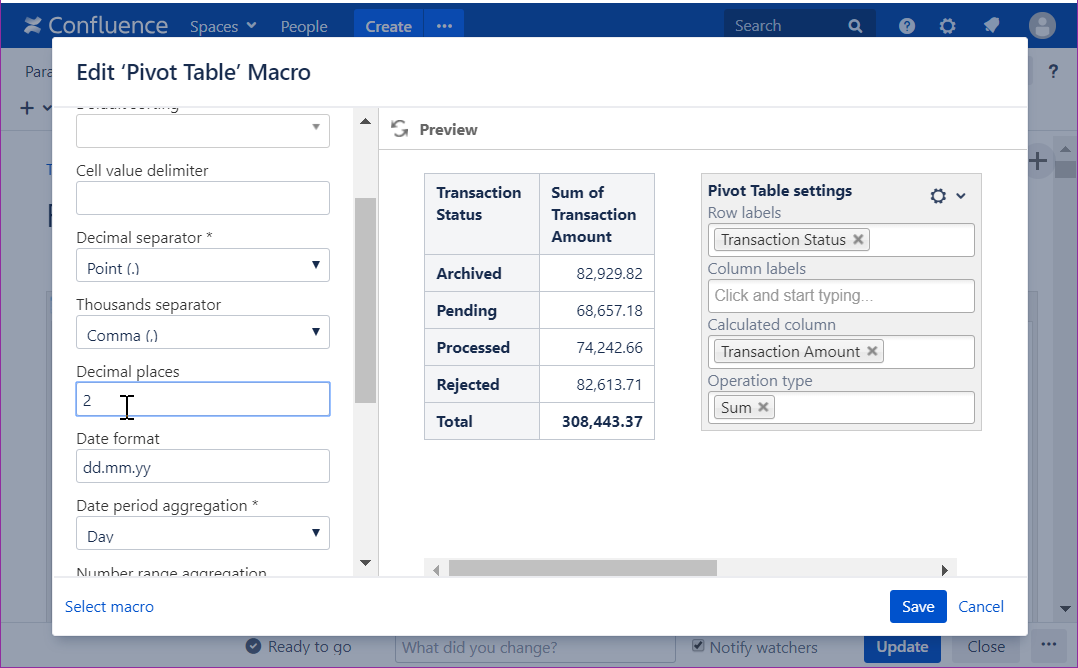
Set the date format
- Switch the page to the edit mode.
- Select the macro and click Edit.
- Switch to the Options tab.
- Locate the Date format box.
Select the correct date format from the list or manually specify it. This format will be used to read date values in the source table.
Save the macro and the page.
For the details on specifying date formats, read this article.
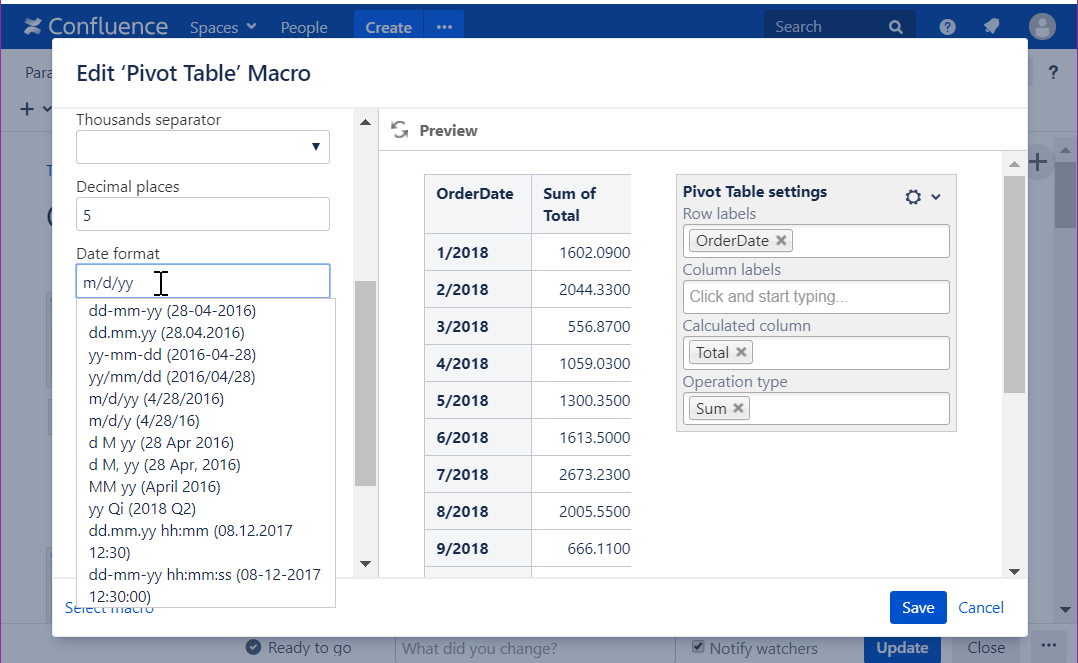
Set the worklog settings
The Pivot Table macro supports summarization of worklogs and time intervals.
Please ensure that the worklog parameters set in the macro are identical to parameters configured in Atlassian JIRA.
- Switch the page to edit mode.
- Select the macro and click Edit.
- Switch to the Options tab.
- Click the Set worklog settings button.
- In the opened form, define the worklog parameters, as follows:
- Days in week - enter the number of business days in a week.
- Hours in day - enter the number of working hours in one business day.
- Time format - select the used time format in worklog values.
- Week shortening - enter the shortening for the week time unit if you use any language different from English.
- Day shortening - enter the shortening for the day time unit if you use any language different from English.
- Hour shortening - enter the shortening for the hour time unit if you use any language different from English.
- Minute shortening - enter the shortening for the minute time unit if you use any language different from English.
- Click Save.
- Save the macro and the page.
Worklog time units in different languages are denoted with different shortenings. Please adjust them according to your JIRA localization settings.
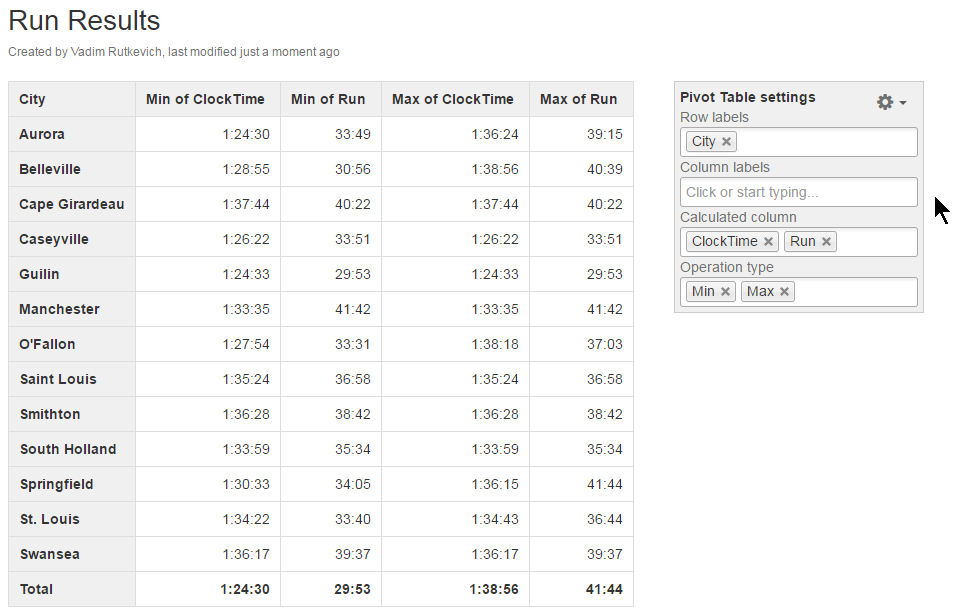
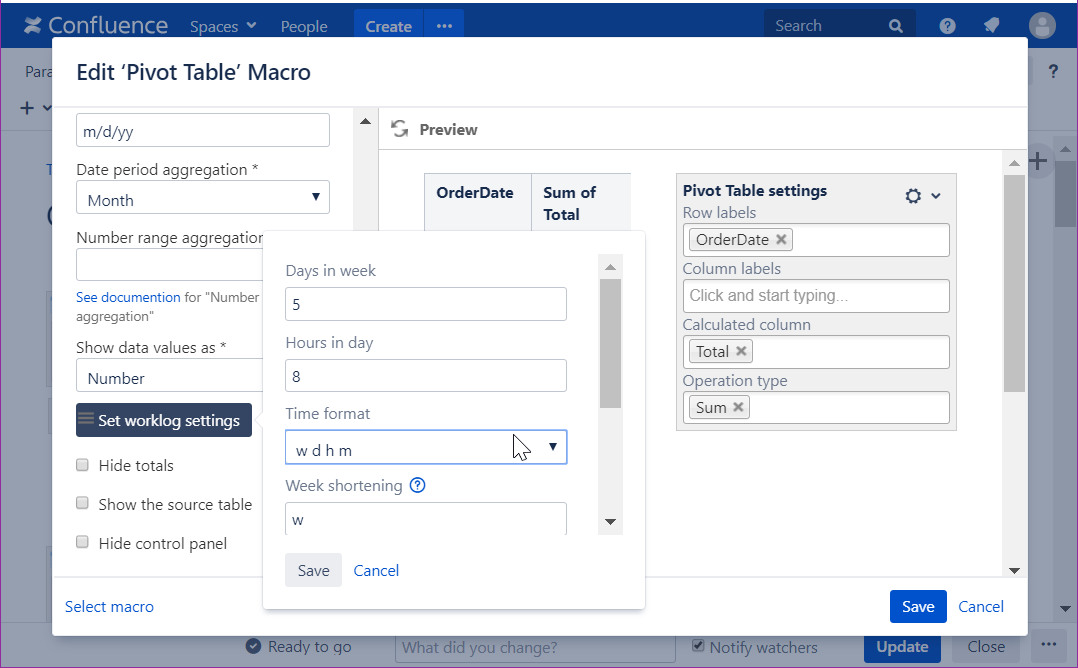
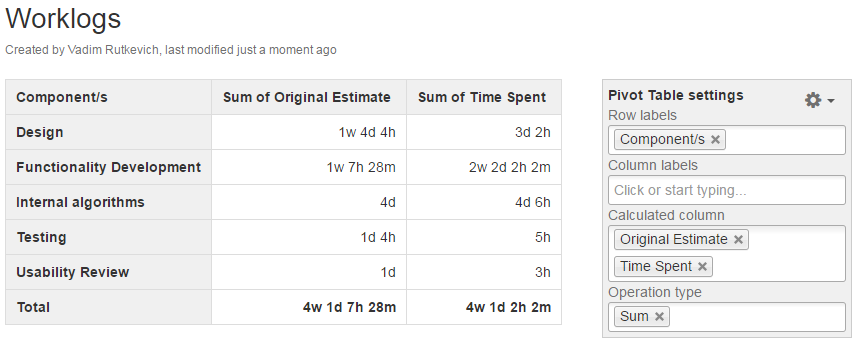
Shorten pivot table header
This option removes the operation type name from the pivot table header.
- Switch the page to the edit mode.
- Select the macro and click Edit.
- Switch to the Options tab.
- Locate and enable the Shorten pivot table header option.
The Shorten pivot table header option works only for simple one-dimensional pivot tables.
But please note that you can always rename pivot columns with the help of the Table Transformer macro.
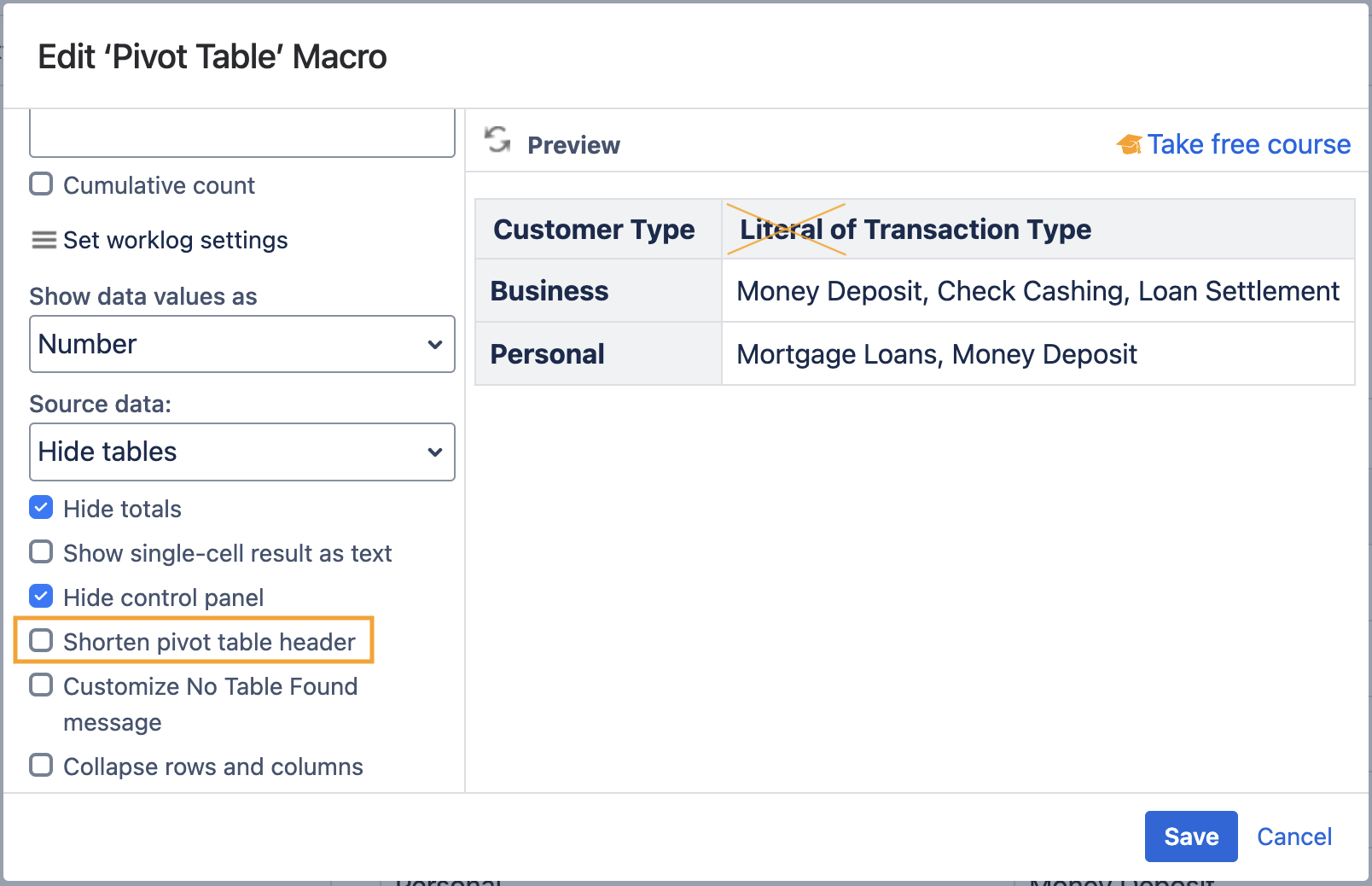
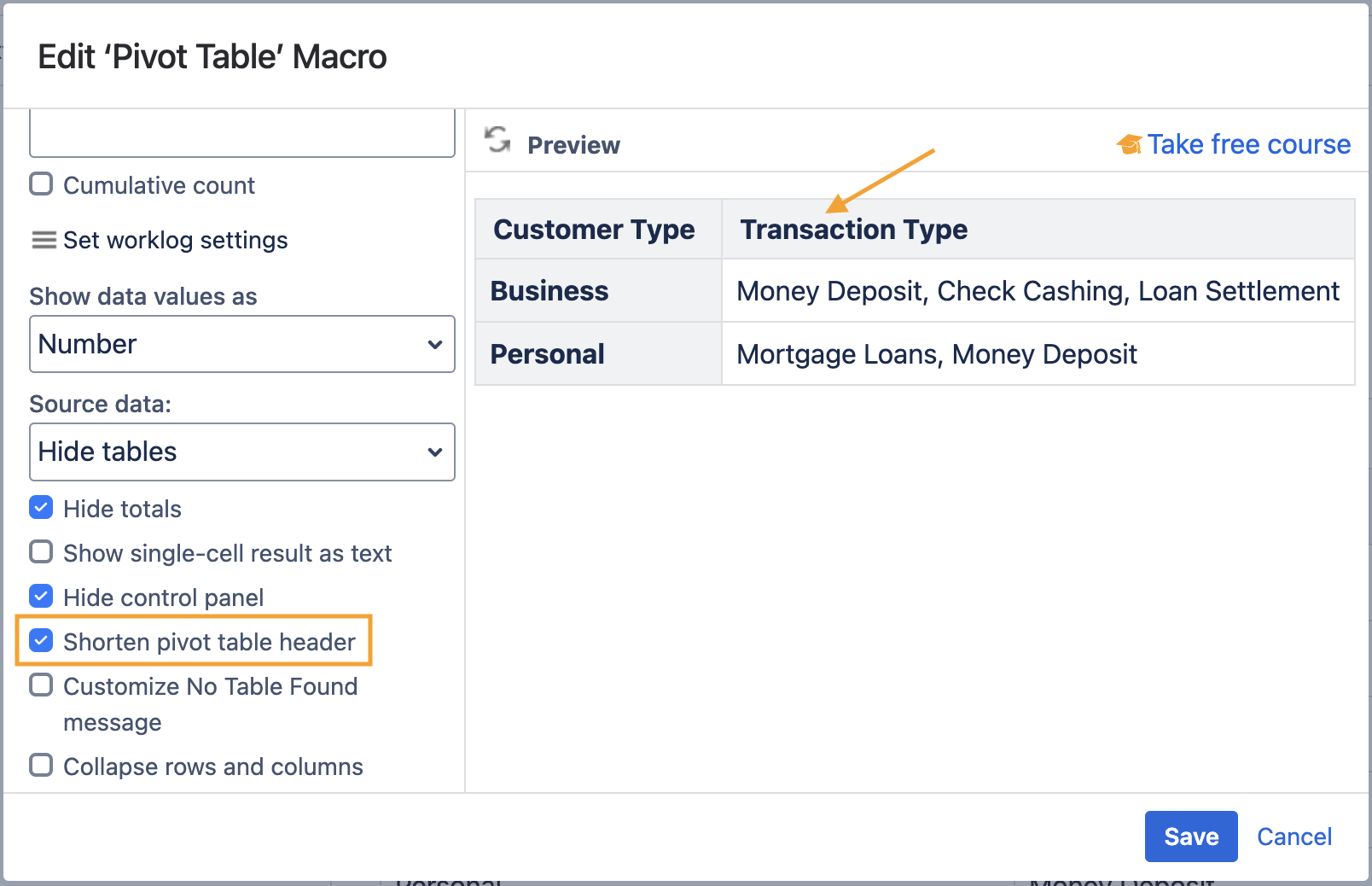
Show single-cell result as text
This option can be enabled only if the calculation result is displayed as a table with a single cell.
- Switch the page to the edit mode.
- Select the macro and click Edit.
- Switch to the Options tab.
- Locate and enable the Show single-cell result as text option.
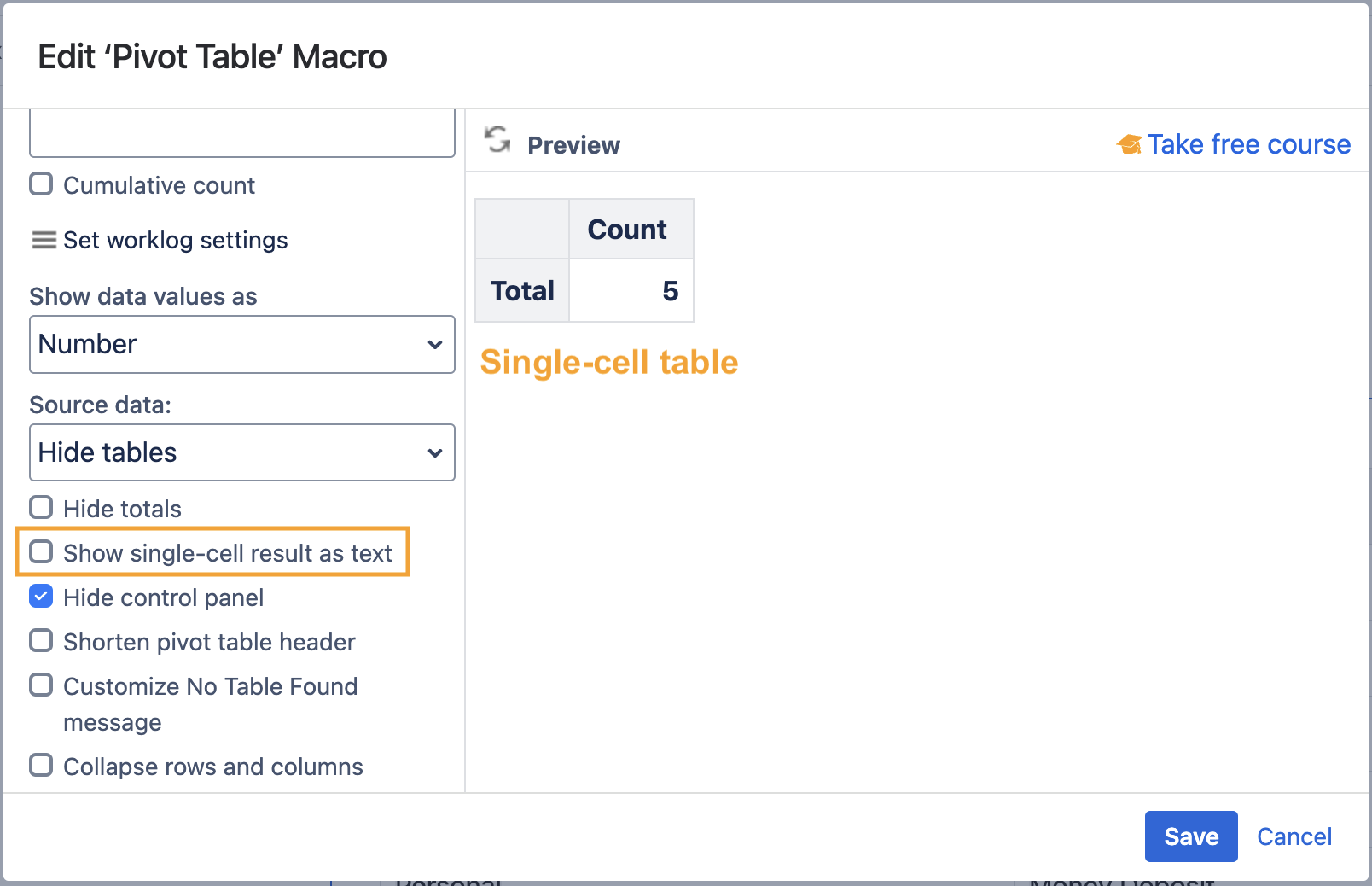
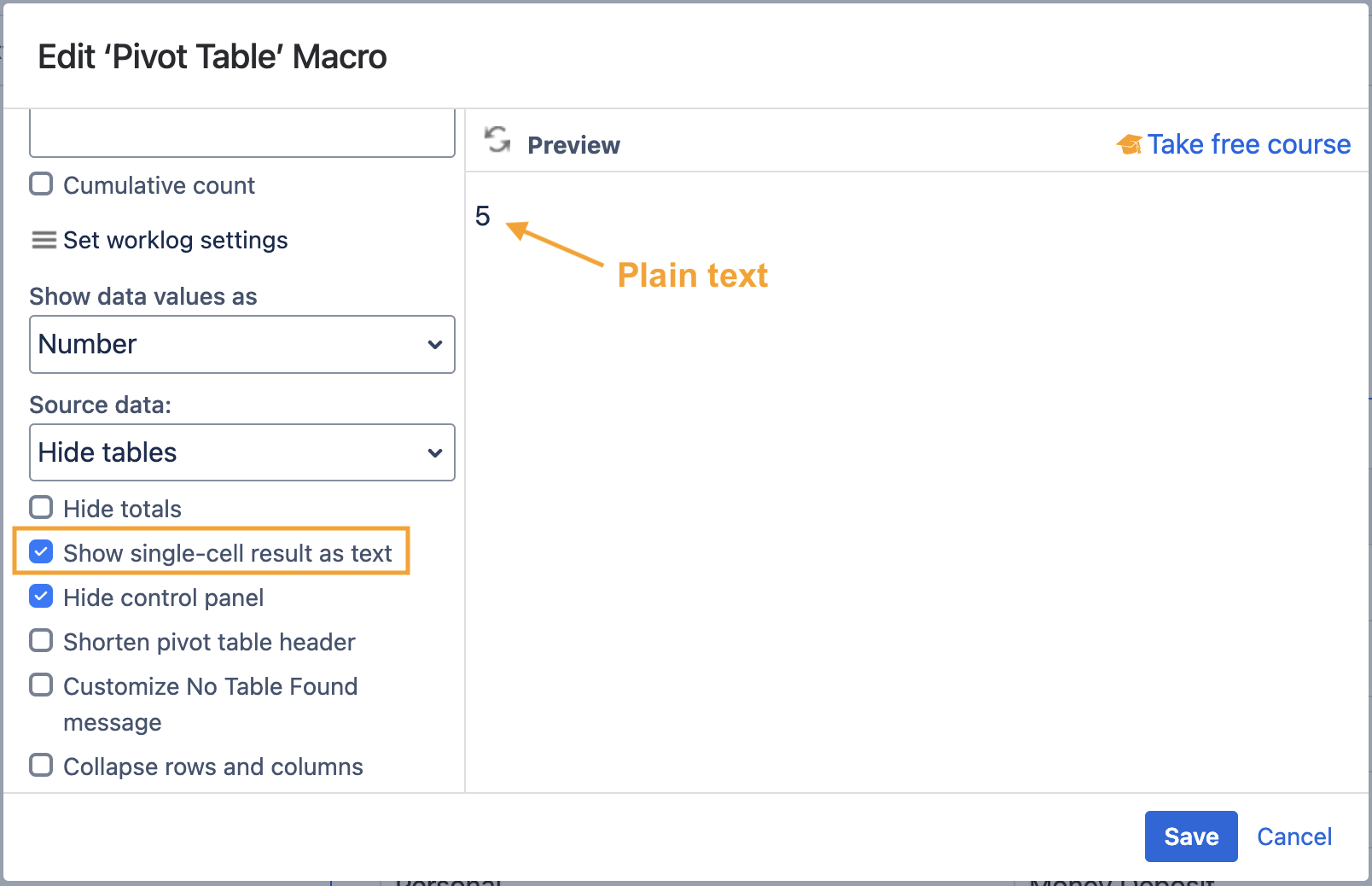
Hide control panel
- Switch the page to the edit mode.
- Select the macro and click Edit .
- Switch to the Options tab.
- Locate and enable the Hide control panel option.
Save the macro and the page.
To hide the control panel in the page view mode:
- Hover over the control panel on the right of the table.
- Click the cogwheel icon, select the Hide control panel option.
To show the control panel hove over the pivot table and click the cogwheel icon on the right of the table.
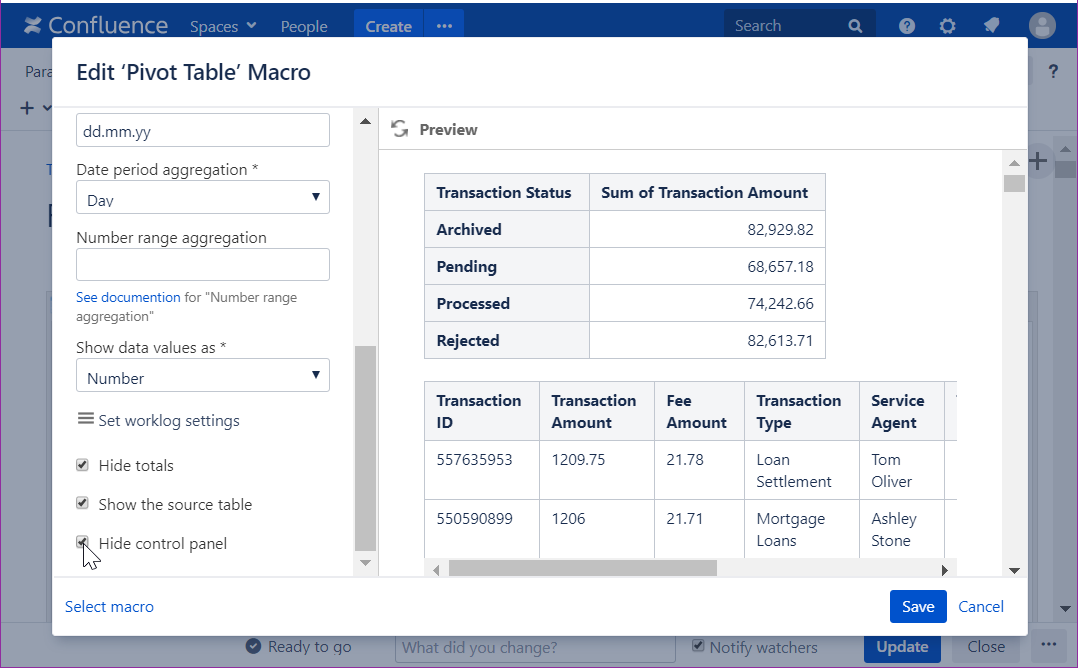
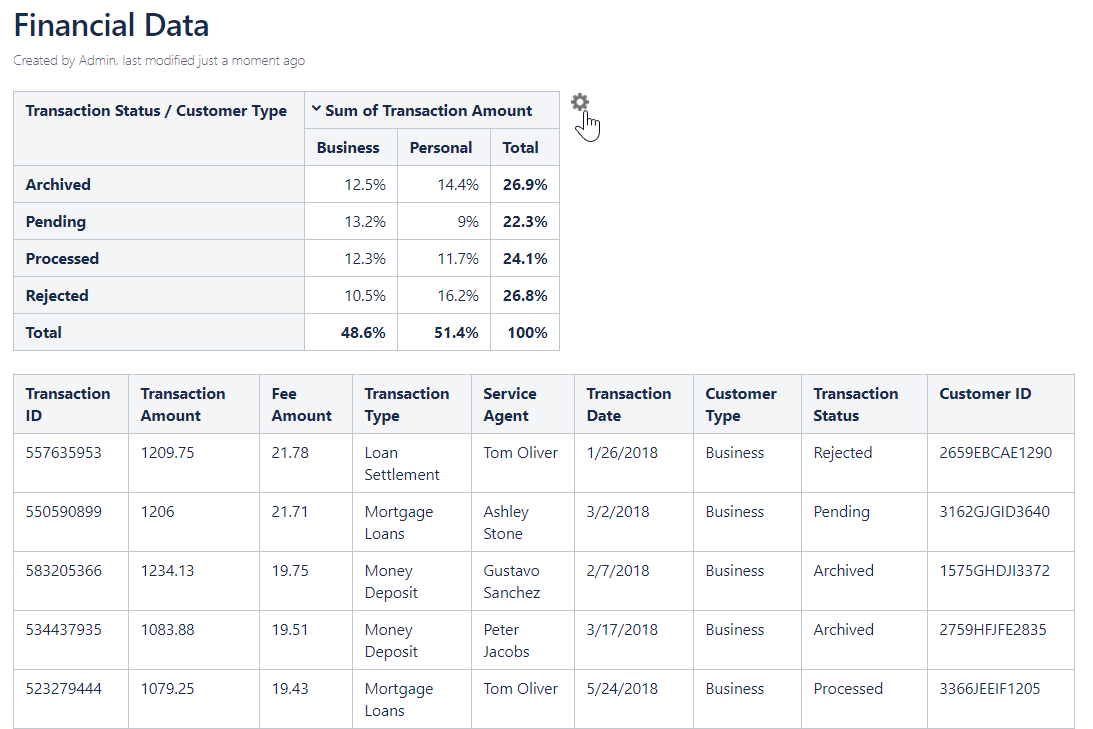
Customize no table found message
This option allows editing the default no table found message.
- Switch the page to the edit mode.
- Select the macro and click Edit.
- Switch to the Options tab.
- Locate and enable the Customize no table found message option.
- Enter your custom message that you want to be displayed instead of the standard one.
- Save the macro and the page.
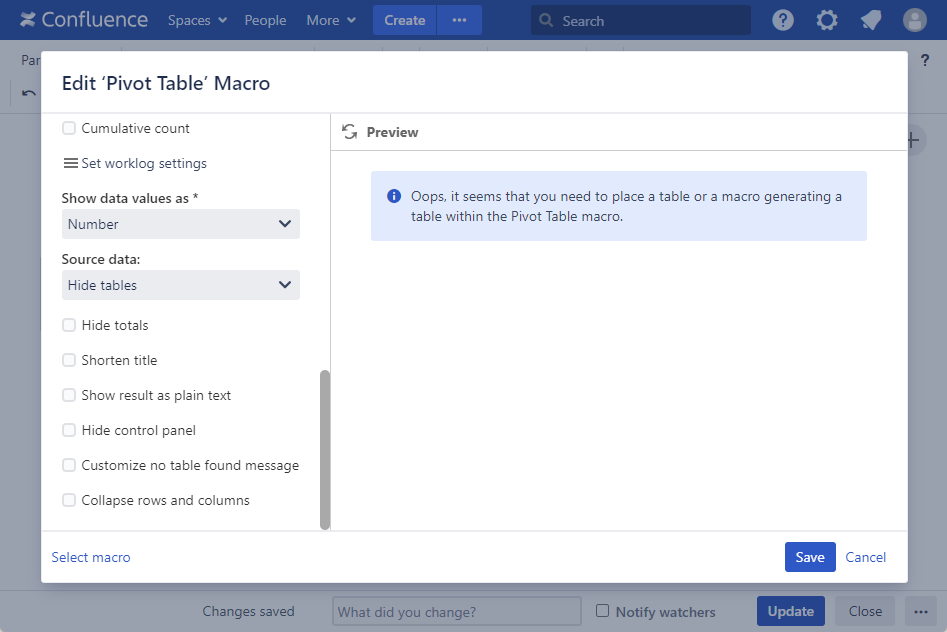
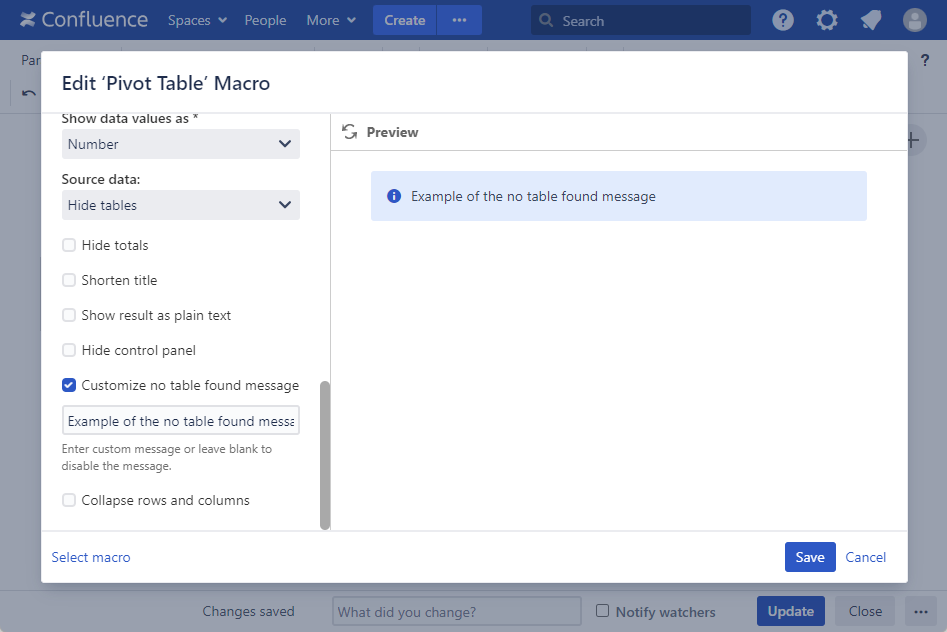
Collapse rows and columns
This option keeps the rows and columns of the multilevel pivot table collapsed by default.
- Switch the page to the edit mode.
- Select the macro and click Edit.
- Switch to the Options tab.
- Locate and enable the Collapse rows and columns option.
- Save the macro and the page.
